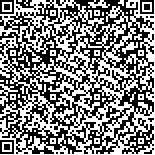| 本文已被:浏览 596次 下载 1110次 |

码上扫一扫! |
|
|
| 基于UPLC-Q-TOF-MS/MS结合网络药理学及分子对接研究益母草水提物治疗动脉粥样硬化的作用机制 |
|
李梓宁1,2,3, 靳雅1,2,3, 李霄1,2,3, 张晗1,2,3, 张鹏1,2,3
|
|
1.天津中医药大学组分中药国家重点实验室, 天津 301617;2.方剂学教育部重点实验室, 天津 301617;3.天津中医药大学中医药研究院, 天津 301617
|
|
| 摘要: |
| [目的] 本研究利用超高压液相色谱串联四级杆飞行时间质谱(UPLC-Q-TOF-MS/MS)技术结合网络药理学及分子对接的方法,探究益母草水提物抗动脉粥样硬化的物质基础与分子机制。[方法] 首先依据UPLC-Q-TOFMS/MS表征与鉴定益母草水提物主要化学成分,通过中药系统药理学数据库与分析平台、SwissTargetPrediction数据库预测其作用靶点,并与在GeneCards数据库、OMIM数据库和DisGeNET数据库中获取的动脉粥样硬化相关靶点交集获得核心靶点。其次通过String数据库构建蛋白互作网络,导入Cytoscape3.7.1软件构建蛋白互作网络和“相关活性成分-潜在作用靶点”网络并进行拓扑结构分析。通过DAVID数据库对靶点基因进行GO功能富集分析和京都基因和基因组百科全书(KEGG)通路富集分析。最后通过AutoDockTools将关键活性成分与核心靶点进行分子对接。[结果] 本研究获得益母草水提物治疗动脉粥样硬化的可能相关活性成分7个,潜在作用靶点259个。益母草水提物活性成分可能通过调控白细胞介素(IL)-6、肿瘤坏死因子(TNF)、IL-1β、血管内皮生长因子A(VEGFA)和c-myc等核心靶点及磷脂酰肌醇3激酶蛋白激酶B(PI3K/Akt)、TNF、低氧诱导因子-1(HIF-1)等信号通路达到抗动脉粥样硬化的作用。[结论] 本研究基于UPLC-Q-TOF-MS/MS技术,通过网络药理学方法发现益母草抗动脉粥样硬化可能是通过多靶点、多成分起作用,为进一步开展相关实验提供依据。 |
| 关键词: 网络药理学 分子对接 益母草水提物 动脉粥样硬化 UPLC-Q-TOF-MS/MS |
| DOI:10.11656/j.issn.1672-1519.2022.11.18 |
| 分类号:R285.5 |
| 基金项目:天津市自然科学基金项目(19JCYBJC28500)。 |
|
| Mechanism of the aqueous extracts of Leonurus japonicus Houtt. in treatment of atherosclerosis based on UPLC-Q-TOF-MS/ MS with network pharmacology and molecular docking |
|
LI Zining1,2,3, JIN Ya1,2,3, LI Xiao1,2,3, ZHANG Han1,2,3, ZHANG Peng1,2,3
|
|
1.State Key Laboratory of Component-based Chinese Medicine, Tianjin University of Traditional Chinese Medicine, Tianjin 301617, China;2.Key Laboratory of Pharmacology of Traditional Chinese Medical Formulae, Ministry of Education, Tianjin 301617, China;3.Institute of Traditional Chinese Medicine, Tianjin University of Traditional Chinese Medicine, Tianjin 301617, China
|
| Abstract: |
| [Objective] In this study,ultra-high pressure liquid chromatography tandem four-stage rod time-of-flight mass spectrometry (UPLC-Q-TOF-MS/MS) technology combined with network pharmacology and molecular docking method was used to explore the material basis and molecular mechanism of Leonurus japonicus Houtt. aqueous extracts (LHAE) against atherosclerosis.[Methods] Firstly, according to UPLC-Q-TOF-MS/MS,the main chemical components of LHAE were characterized and identified,and the targets were predicted through the Chinese Medicine System Pharmacology Database and analysis platform and Swiss Target Prediction database. The core targets were obtained by intersections with the atherosclerosis related targets obtained in GeneCards database,OMIM database and DisGeNET database. Secondly,the String database was used to construct the protein interaction network,and Cytoscape 3.7.1 software was imported to construct the protein interaction network and the "related active ingredient-potential targets" network,and then the topological structure was analyzed. GO functional enrichment analysis and KEGG pathway enrichment analysis of target genes were performed by DAVID database. Finally,the key active components were docked with the core target by AutoDock Tools.[Results] In this study,7 active components and 259 potential targets of LHAE in the treatment of atherosclerosis were obtained. The active components of LHAE may play an anti-atherogenic role by regulating core targets such as IL-6,TNF,IL-1β,VEGFA and c-myc,and signaling pathways such as PI3K/Akt,TNF and HIF-1.[Conclusion] Based on UPLC-Q-TOF-MS/MS technology,this study found that Leonurus japonicus Houtt. may act through multiple targets and components in anti-atherosclerosis by network pharmacology method,which provides a basis for further relevant experiments. |
| Key words: network pharmacology molecular docking aqueous extracts of Leonurus japonicus Houtt. atherosclerosis UPLC-Q-TOF- MS/MS |
